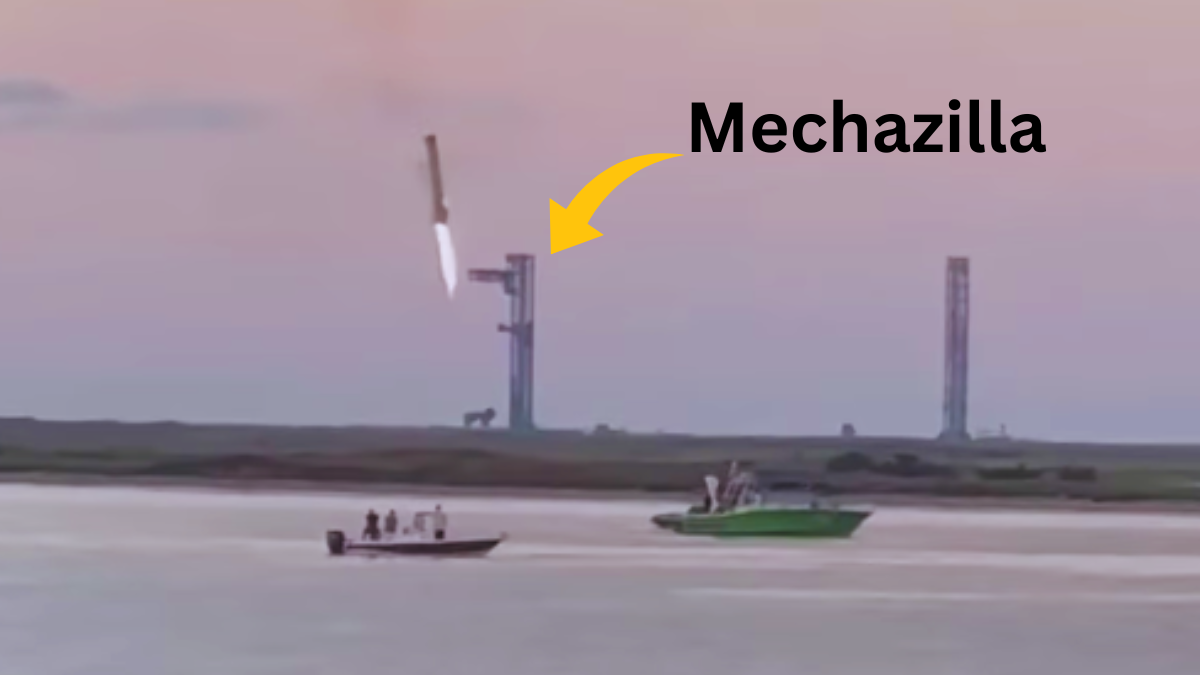
SpaceX has done it again. In a stunning display of cutting-edge technology, SpaceX catches a rocket—specifically, the Super Heavy booster—in mid-air, marking a major leap forward in the company’s mission to create fully reusable spacecraft. The star of the show? A towering robotic system affectionately called “Mechazilla.” This isn’t just sci-fi anymore. It’s real, and it could change space exploration forever.
Read More: How Many Times Can SpaceX Reuse a Rocket?
How SpaceX Caught a Rocket with Mechazilla
So, how exactly did SpaceX catch this rocket in mid-air? Imagine this: after launching its Starship into the sky, the Super Heavy booster descends back to Earth. Rather than falling into the ocean, like most rockets, this one is caught by two gigantic robotic arms attached to the launch tower. These arms, designed to “grab” the rocket as it falls, pull off a delicate yet powerful feat—catching the booster mid-descent before it can crash land.
SpaceX catches rocket using a method that’s both daring and technically brilliant. This isn’t just about being cool; it’s about reducing costs and waste, which could open doors to cheaper, more frequent spaceflights.
Why Does This Matter?
Here’s why this is so important. The traditional method for space launches is expensive—rockets are mostly used once, then discarded. But if SpaceX catches a rocket and reuses it, the costs of space travel plummet. Think about how commercial airlines work: planes are reused over and over again. Imagine if they were thrown away after each flight. The price of a ticket would be astronomical—just like traditional space missions!
Now, SpaceX is rewriting the rules. With Mechazilla, they aim to reuse the Super Heavy booster again and again, making space travel cheaper, faster, and more efficient.
The Challenges Ahead
Of course, it’s not all smooth sailing (or smooth catching). While SpaceX has pulled off this incredible feat, critics argue that the process isn’t foolproof yet. There are concerns about the durability of the boosters after multiple catches. Will the boosters hold up over time? And what if Mechazilla misses? With the amount of precision required, one wrong move could send the booster crashing, which could be costly.
But then again, this is Elon Musk’s vision, and as we’ve seen, SpaceX doesn’t back down from a challenge.
What’s Next for SpaceX?
Now that SpaceX catches rockets in mid-air, what’s next? Well, this is just the beginning. With the ability to reuse boosters, SpaceX can ramp up its goal of making interplanetary travel a reality. Whether it’s the Moon, Mars, or even beyond, this development brings us one step closer to a future where space travel is as routine as taking a flight across the country. MEGA LINK
SpaceX plans to refine the process further, possibly even catching the second-stage Starship itself. And when that happens, it won’t just be a leap for SpaceX; it’ll be a giant leap for humanity.
This breakthrough is a game-changer for space travel, but it’s also just the start of something even bigger. As the technology improves and costs drop, it could change the way we think about space exploration forever.

